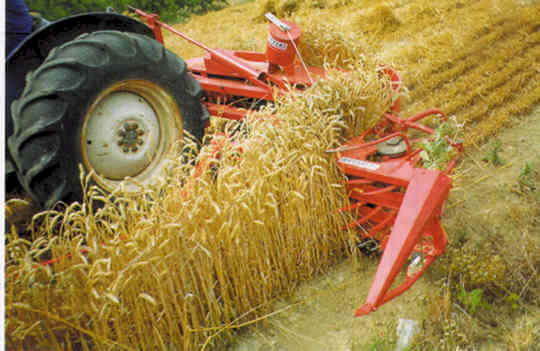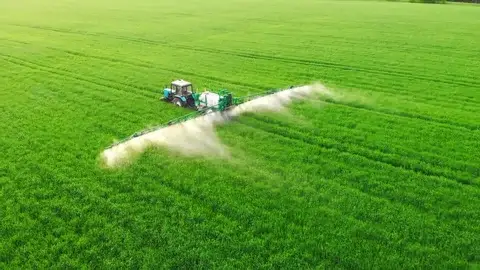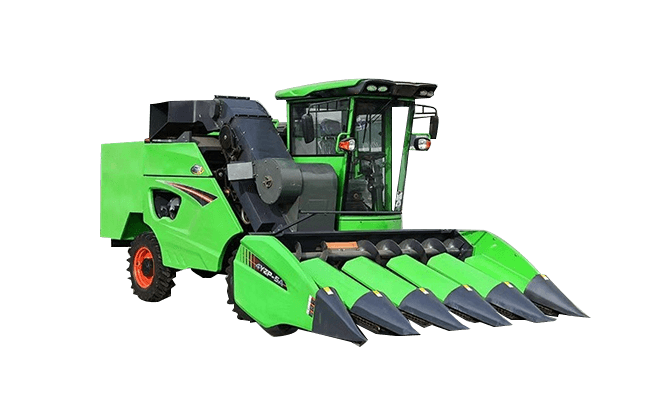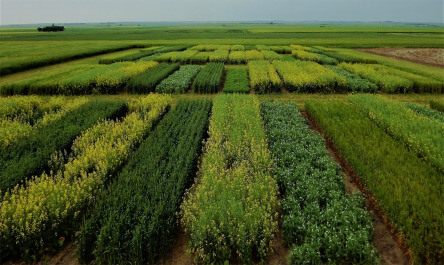Agriculture plays a crucial role in Kenya’s economic structure, and efficient harvesting machinery, such as combine harvesters, has become a key tool for improving farm productivity. With the growing demand for faster and more efficient crop harvesting, the need for reliable machinery is more urgent than ever. Combine harvesters not only simplify the harvesting process but also reduce labor costs and improve yield quality. However, Kenyan farmers face the challenge of a market flooded with a wide variety of harvester models, each with significant price differences.
Farmers in Kenya face a unique challenge when selecting a combine harvester due to the varying prices and the array of models on the market. With different fuel types, sizes, and features, it can be overwhelming for farmers to identify the best model that meets their operational needs while remaining within their budget. As the demand for combine harvesters continues to rise, making an informed decision is crucial in order to select a model that aligns with the specific requirements of their farm.
In this article, we will explore the factors that influence combine harvester pricing in Kenya. Understanding these variables will help farmers and agricultural businesses make well-informed decisions when purchasing harvesting equipment. Keep reading to learn about the key considerations to keep in mind while navigating the different options and finding the right combine harvester that fits both operational needs and financial constraints.
Contents
1. Key Factors Influencing Combine Harvester Prices in Kenya
1.1 Type of Combine Harvester
Small vs. Large Harvesters
Smaller Models:
These tend to be more affordable upfront, making them a viable option for small to medium-scale farmers. However, they come with limitations such as lower crop capacity and reduced efficiency in large-scale operations.

Larger Models:
Ideal for large-scale farming, these machines have higher horsepower and larger grain tanks. While they come with a higher price tag, they provide greater efficiency, faster harvesting speeds, and can handle a wider variety of crop types, making them a more sustainable investment for large farms.

Self-Propelled vs. Pull-Behind
Self-Propelled Combines:
These machines are fully autonomous, offering greater maneuverability, speed, and ease of operation. They are equipped with engines that power both the harvester and the drive system, making them more versatile but also pricier.
Tractor-Mounted (Pull-Behind) Combines:
These models are more affordable but require an additional tractor to pull them. While they may be less efficient, they are suitable for smaller farms with existing tractors, offering a more budget-friendly option for low-to-medium-scale farming operations.

1.2 Brand and Manufacturer
Local vs. International Brands
Local Kenyan Manufacturers:
Local brands may offer more competitive pricing but can sometimes compromise on advanced technology, fuel efficiency, and after-sales support. However, they are more adaptable to the local environment, and spare parts may be more accessible.
International Brands:
Brands such as John Deere, Massey Ferguson, and New Holland are known for their advanced technologies, higher durability, and extensive service networks. These brands tend to come at a higher initial price but provide better technology integration, reliability, and long-term performance, which can reduce costs over time due to fewer breakdowns.
Service and After-Sales Support
After-sales service is critical for the long-term performance of combine harvesters. Availability of spare parts, local service centers, and warranty packages can influence the total cost of ownership. International brands often provide comprehensive support, whereas local manufacturers might have limited service options, affecting long-term operational costs.
2. Understanding the Price Range for Combine Harvesters in Kenya
Price Ranges for Different Models
Entry-Level Harvesters
Entry-level combine harvesters are designed for small and medium-sized farms. These models typically feature fewer advanced technologies, making them more affordable. They are ideal for farmers who need essential harvesting capabilities but don’t require the high-end features found in larger machines.
Price Range: KSh 2,000,000 – KSh 5,000,000
Key Features:
Smaller engine size, suitable for light to moderate harvesting tasks
Less advanced automation or GPS technology
Lower fuel efficiency, potentially higher running costs
Best For:
Small-scale farmers with moderate yields or those who are starting their operations and looking to minimize costs while maintaining a reasonable level of efficiency.
Mid-Range Harvesters
These harvesters are designed for larger farms with moderate budgets. They offer a better balance of technology, power, and fuel efficiency. Mid-range models provide more advanced features than entry-level machines but at a more affordable price than high-end models.
Price Range: KSh 5,000,000 – KSh 12,000,000
Key Features:
Improved power output and fuel efficiency
Basic automation, such as GPS guidance or automated header controls
Better quality build, capable of handling more intensive workloads
Best For:
Medium-sized farms looking for higher harvesting capacity and improved fuel economy without the high price tag of premium models.
High-End Models
These top-tier combine harvesters are built for large-scale commercial farming operations. They are packed with advanced technologies such as enhanced GPS systems, automated crop sensors, and superior fuel efficiency systems. High-end models are designed to handle high-output, long operational hours, and challenging environmental conditions.
Price Range: KSh 12,000,000 – KSh 20,000,000+
Key Features:
State-of-the-art automation and GPS tracking for precision farming
Advanced fuel injection and energy efficiency technologies
Larger cutting headers, faster throughput, and extended operational hours
Best For:
Large-scale commercial farms that need to maximize productivity, minimize operational costs, and keep up with modern farming demands. These models are ideal for those who expect high returns from large harvests and can invest in long-term equipment reliability.
3 Financial Considerations for Kenyan Farmers
3.1 Financing Options for Purchasing Combine Harvesters
Loans and Credit Facilities
Accessing financing through loans or credit facilities is often the most practical way for Kenyan farmers to acquire a combine harvester. Local banks, microfinance institutions, and government programs offer financing options tailored to the agricultural sector.
Benefits:
Flexible Payment Terms: Many financial institutions offer flexible repayment terms that align with the farming calendar, making it easier for farmers to manage their finances.
Competitive Interest Rates: Through partnerships with the government or international aid organizations, farmers may benefit from lower interest rates on loans.
Government Agricultural Support Programs: The Kenyan government often supports agricultural machinery financing through subsidized loans, which can make acquiring a harvester more affordable for small and medium-sized farms.
Challenges:
Credit History: Farmers may face difficulties accessing loans if they do not have a strong credit history, which could limit their ability to invest in large machinery.
High-Interest Rates: While some loans are subsidized, the interest rates for unsecured loans or loans not covered by government subsidies may still be high, making the total cost of financing significant over time.
Leasing Options
Leasing a combine harvester can be a viable alternative for farmers who need the equipment but cannot afford the upfront cost. Leasing allows farmers to use the harvester for a specific period while paying an agreed monthly fee.
Benefits:
Low Initial Investment: Leasing allows farmers to access high-quality machinery without the heavy initial investment.
Maintenance Included: Many leasing contracts include maintenance services, reducing the cost of repairs and ensuring the equipment is in optimal working condition.
Upgrade Flexibility: After the lease term, farmers can opt for a newer model, ensuring that they always have access to the latest technology without committing to long-term ownership.
Challenges:
Ongoing Costs: Leasing payments are recurring, which may increase the overall cost over time.
Limited Ownership: At the end of the lease term, farmers do not own the harvester, which means they do not benefit from the asset’s long-term value.
3.2 Cost vs. Return on Investment (ROI)
Fuel Efficiency and Labor Savings
One of the major advantages of investing in a high-performance combine harvester is the reduction in fuel consumption and labor costs.
How It Works:
A fuel-efficient combine harvester uses less fuel to perform the same tasks, reducing operating costs. Additionally, modern combine harvesters are equipped with automation and precision farming technology, which reduces the need for manual labor during harvesting, optimizing labor efficiency.
Impact on ROI:
Reduced Fuel Costs: By selecting a fuel-efficient model, farmers can cut down on fuel consumption, leading to significant savings over the course of the harvesting season.
Lower Labor Costs: With a higher harvesting speed, the need for additional labor is minimized, helping farmers save on wages, especially during peak harvest seasons.
Improved Harvesting Yield and Crop Quality
High-quality combine harvesters are designed to minimize crop loss during harvesting, improve grain quality, and reduce the risk of contamination.
How It Works:
Modern combine harvesters come equipped with advanced systems that adjust cutting height, speed, and threshing settings to optimize grain collection while reducing loss.
Impact on ROI:
Higher Crop Yields: The ability to harvest crops more efficiently with fewer losses increases the overall yield, leading to higher profits.
Improved Grain Quality: The better quality of harvested grain enhances marketability and potentially leads to higher market prices, especially for high-quality crops like wheat or maize.
4. How to Choose the Right Combine Harvester for Your Farm
4.1 Assessing Your Farm’s Size and Type of Crop
Crop Types
When selecting a combine harvester, understanding the types of crops you grow on your farm is essential for choosing the appropriate machine. Different types of harvesters are designed specifically for different crops, such as maize, wheat, rice, or barley, and selecting the right model will improve efficiency and minimize waste during harvest.
Key Considerations:
Crops Like Maize and Wheat: These crops often require machines that can handle larger volumes and larger cutting headers, especially if they are harvested on a large scale. Larger headers and threshing systems help maximize harvest efficiency.
Rice and Barley: These crops require more delicate harvesting systems to minimize damage and ensure higher-quality grain. Some combine harvesters come with additional settings to adjust the threshing mechanism to avoid damaging smaller or more delicate grains.
Custom Attachments: Some combines offer the flexibility to change attachments, making them adaptable to different types of crops. This is particularly useful for diversified farms that produce multiple crops.
Benefits:
Reduced Crop Loss: Proper harvesting equipment ensures that fewer grains are left in the field, maximizing your output.
Increased Efficiency: The correct harvester tailored to specific crops will reduce downtime and increase the speed of operation, allowing for quicker turnaround during harvest seasons.

Farm Size
The size of your farm and the volume of crops you harvest significantly impact the type of combine harvester you should consider.
Considerations for Different Farm Sizes:
Small-Scale Farms: If your farm is small, a smaller, more affordable combine with lower capacity may be sufficient. These models are typically lighter, easier to maneuver, and have lower operating costs.
Medium to Large Farms: Larger farms will need machines that can handle a higher volume of crops per hour. For farms with substantial acreage, selecting a harvester with larger grain tanks, wider headers, and higher throughput capabilities will ensure you can complete the harvest in a timely manner without the need for constant refueling or emptying.
Benefits:
Optimized Harvesting Time: For large farms, high-capacity combines are crucial to reducing the time spent harvesting.
Cost Efficiency: Selecting the right size machine helps reduce fuel consumption and maintenance costs.

4.2 Matching Budget with Features
Evaluate Needs vs. Wants
Choosing the right combine harvester involves evaluating both essential needs and desirable features based on your farm’s specific requirements. It’s crucial to prioritize what features are absolutely necessary for efficient harvesting versus those that may be more of a luxury or add unnecessary costs.
Essential Features to Consider:
Fuel Efficiency: Given the high fuel costs, selecting a harvester with good fuel efficiency will help reduce overall operating expenses, especially for large-scale operations.
Durability: A combine harvester represents a significant investment, so durability is key. Look for models known for their longevity and reliability under heavy use.
Ease of Maintenance: Regular maintenance is necessary for keeping a combine harvester in good working condition. Machines that are easy to service, with readily available spare parts, reduce downtime and costly repair bills. Models with self-diagnostics and remote monitoring systems can be advantageous.
Benefits:
Cost Savings: By prioritizing essential features over non-essential ones, you can stay within your budget while ensuring the machine meets your needs for efficiency and productivity.
Long-Term Value: Investing in a more durable, fuel-efficient model can save on long-term costs, including repairs and fuel. This can be particularly important in maximizing ROI on the harvester.
Conclusion
In conclusion, understanding the key factors that influence combine harvester pricing in Kenya is essential for farmers to make an informed purchasing decision. These factors, including the type of harvester, brand, features, and fuel efficiency, significantly affect the total cost and overall performance. It’s crucial for farmers to match their budget with the right harvester model that aligns with their operational needs while ensuring long-term sustainability and profitability.
Farmers should carefully evaluate available options and consider financing solutions to make the most cost-effective purchase. By selecting the appropriate combine harvester, farmers can maximize their return on investment (ROI) and improve operational efficiency in the long run.
MINNUO provides high-performance, fuel-efficient combine harvesters designed specifically for Kenyan farmers. With competitive pricing, reliable after-sales support, and flexible financing options, MINNUO helps farmers make smart purchasing decisions that support both short-term productivity and long-term farm sustainability.

